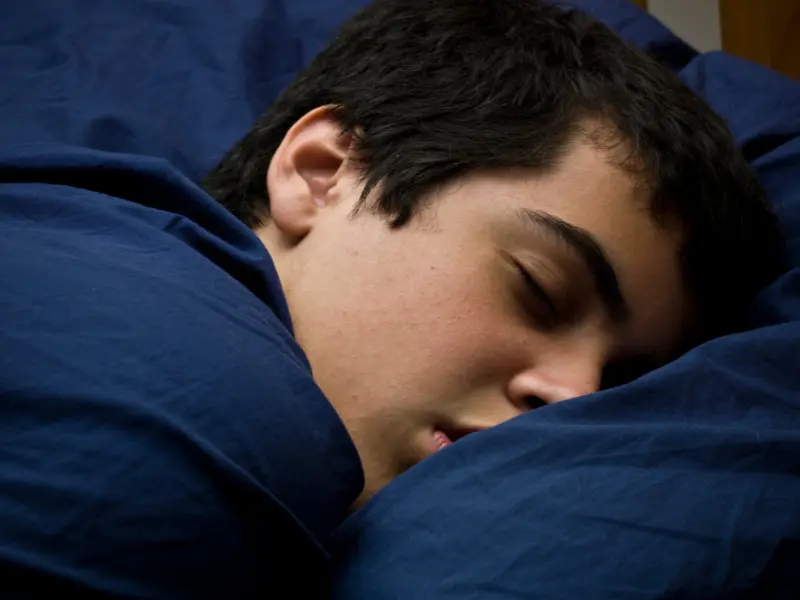The Role of Light Exposure in Regulating Sleep

Have you ever wondered why you feel more awake on some days than others? Or why a late-night binge-watching session leaves you groggy the next morning? The answer often lies in something as simple yet powerful as light. Our bodies have an internal clock, known as the circadian rhythm, that dictates our sleep patterns and overall well-being. Understanding how light exposure influences this rhythm can be a game changer for achieving restful nights and energized days. Let’s dive into the fascinating relationship between light and sleep, exploring how to harness it for better health and vitality.
What is circadian rhythm and how does it affect our sleep patterns?
Circadian rhythm is our body’s natural clock, ticking away in a 24-hour cycle. It regulates various biological processes, including sleep-wake cycles, hormone release, and even temperature.
This internal system responds primarily to light and darkness. When daylight hits your eyes, it signals your brain to stay alert and awake. As the sun sets, the opposite occurs; melatonin production increases, prompting feelings of drowsiness.
Disruptions to this rhythm can lead to sleep disorders or chronic fatigue. Irregular schedules or exposure to artificial light at night can confuse your body’s timing mechanism.
Understanding circadian rhythms allows you to appreciate why maintaining a consistent sleep schedule is crucial for health. By syncing with these natural patterns, you pave the way for deeper slumber and improved overall well-being.
The role of light in regulating our circadian rhythm
Light serves as a primary cue for our circadian rhythm, the internal clock that dictates our sleep-wake cycles. When sunlight enters through your window in the morning, it signals to your brain that it’s time to be awake and alert. This natural light helps regulate hormones like melatonin, which plays a crucial role in promoting sleep.
As evening falls, exposure to diminishing light cues the body to prepare for rest. The brain produces more melatonin when darkness descends, easing you into sleep mode.
However, not all light is created equal. Artificial lighting—especially blue light from screens—can confuse this delicate system. It can trick your mind into thinking it’s still daytime, leading to disrupted sleep schedules and poor rest quality.
Understanding how light interacts with our biology allows us to make informed choices about our environment and routines for better overall health.
Natural vs artificial light: their effects on sleep
Natural light plays a crucial role in regulating our sleep-wake cycle. Exposure to sunlight during the day helps signal to our bodies that it’s time to be awake and alert. This natural rhythm promotes better mood and cognitive function.
On the other hand, artificial light can disrupt this balance. Many of us spend hours under fluorescent lights or staring at screens, especially in the evening. These sources emit blue light, which tricks our brain into thinking it’s still daytime.
This interference with melatonin production makes falling asleep more challenging. It can lead to later bedtimes and poorer sleep quality overall.
To nurture good rest habits, consider limiting exposure to artificial lighting as bedtime approaches. Prioritizing soft, warm lighting can help create a soothing atmosphere conducive to sleep while preserving your circadian rhythm’s integrity.
Tips for optimizing light exposure for better sleep
To optimize light exposure for better sleep, start by embracing natural sunlight during the day. Open your curtains and let the sun fill your space. This boosts your mood and helps regulate your circadian rhythm.
As evening approaches, reduce exposure to bright lights. Dimming indoor lighting signals to your body that it’s time to wind down. Consider using soft lamps or candles instead of harsh overhead lights.
Blue light from screens can disrupt sleep patterns, so limit screen time at least an hour before bed. If you must use devices, enable blue light filters or wear glasses designed to block blue wavelengths.
Creating a bedtime routine is also beneficial. Incorporate low-light activities like reading or meditating in a cozy corner of your home to help transition into restful sleep mode.
Consider blackout curtains if you’re easily disturbed by outside light sources during the night.
How different types of lighting at home can impact your sleep
The type of lighting in your home plays a crucial role in shaping your sleep environment. Warm, soft lights create a soothing atmosphere that signals to your body it’s time to wind down. These hues mimic the natural light of sunset, promoting relaxation.
On the other hand, bright white or blue-toned lights can disrupt this process. They emit wavelengths similar to daylight and trick your brain into staying alert. This is particularly problematic during evening hours when you should be preparing for sleep.
Consider using dimmable lamps or smart bulbs that allow you to adjust brightness levels throughout the day. Incorporating tasks like reading under softer light can also ease the transition from wakefulness to rest.
Blackout curtains are essential for blocking outside light while you sleep, ensuring an uninterrupted slumber experience. Simple changes in your home’s lighting can significantly enhance your nightly routine and overall well-being.
Recommendations for improving sleep through light exposure
To improve your sleep through light exposure, start by embracing natural light during the day. Spend time outside, especially in the morning. This helps synchronize your circadian rhythm and boosts alertness.
As evening approaches, reduce exposure to artificial lighting. Switch off bright overhead lights and opt for dimmer lamps or candles. Consider using blue light filters on devices like phones or computers an hour before bedtime to minimize disruption.
Creating a cozy atmosphere is essential too. Darken your bedroom with blackout curtains to block out external light sources that can interfere with sleep quality. A consistent sleeping schedule also reinforces your body’s internal clock, so aim for regular bedtimes and wake-up times.
Additionally, consider using smart lighting systems that adjust automatically throughout the day—bright in the morning and softer at night—to support your body’s natural rhythms.
Implementing these strategies can make a significant difference in achieving restful nights and feeling more energized during the day. Prioritizing how you interact with light may just be one of the simplest yet most effective ways to enhance your overall well-being.









